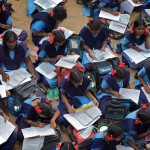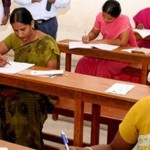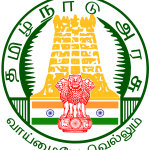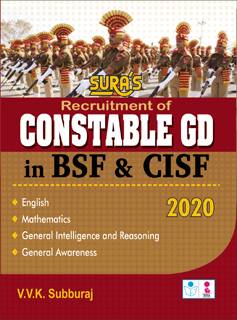
1. Who among the following was not a Pindari Chief leader?
A) Karim Khan
B) Wasil Muhammad
C) Chitu
D) Amar Singh Thapa
Explanation : Ans : (D)
Amar Singh Thapa was not a Pindari Chief Leader.
Amar Singh Thapa also known by the honorific name Bada Kaji or Budha Kaji, was the overall commander of the Nepal Army in the conquest of Western Provinces and authoritative ruler of Kumaon, Garhwal and its West in the Kingdom of Nepal. He was referred by the king of Nepal to have been deployed as Mukthiyar (equivalent to Prime Minister) of Western Provinces of Kumaon, Garhwal and its West. He is often hailed as Living Lion of Nepal and was posthumously regarded as one of the national heroes of Nepal, who led the Anglo-Nepalese War for the Gorkhali Army.
Pindaris :
Pindaris were freebooters composed of both Muslim and Hindu bandits. The subsidiary Alliance of the company had led to the disbandment of thousands of soldiers and most of them joined them and swelled their numbers in Central India. The British proclaimed Pindari War. But it turned out to be a war against Marathas and the outcome of this prolonged war (1811 to 1817) was that the whole of Central India came under British rule. During the Independent Period this territory consisted of the land north of the Nerbudda River in Malwa and Central India. Chitu held land in the mountainous area around Sutwas and Nimwar just north of the Nerbudda, Karim Khan held the largest amount of land in the Pan Mahals, and Wasil Muhammad held land around Karewye and Udaipur.
2. In 1922 Gandhiji was sentenced for six years for writing his articles in which among the following news paper ?
A) Harijan B) Young India
C) India Today D) Bombay Samachar
Explanation : Ans : (B)
Mahatma Gandhi was arrested and tried for sedition on March 10, 1922, for writing three ‘politically sensitive’ articles in his weekly journal “Young India”, which was published from 1919 to 1932. Gandhi was sentenced to six-year jail term.
Three charges were imposed on Gandhi – ‘tampering with loyalty’, ‘shaking the manes’ and ‘attempt to excite disaffection towards the British government’.
What is the sedition law and what does it say in the Indian Penal code :
Section 124-A in the Indian Penal Code named ‘sedition’, explains sedition in wide and magnanimous terms.
It says “Whoever, by words, either spoken or written, or by signs, or by visible representation, or otherwise, brings or attempts to bring into hatred or contempt, or excites or attempts to excite disaffection towards the Government established by law in India” shall be punished with life imprisonment.
The explanation which the Indian Penal Code gives for the expression of ‘disaffection’ includes disloyalty and all feelings of hate.
According to the section 124-A, comments expressing strong disapproval of the “administrative or other action of the Government without exciting or attempting to excite hatred, contempt or disaffection, do not constitute an offense under this section”.
The sedition law was originally drafted by Thomas Macaulay.
3. Universal Primary Education aimed at achievement of education for all class covering
A) VI – X B) I – V
C) XI – XII D) VI – XII
Explanation : Ans : (B)
Primary education : The
Primary education in India is divided into two parts, namely Lower Primary
(Class I-V) and Upper Primary (Middle school, Class VI-VIII). The Indian
government lays emphasis on primary education
(Class I-VIII) also referred to as elementary education, to children aged 6 to
14 years old.
Education has also been made free for children for 6 to 14 years of age or up to class VIII under the Right of Children to Free and Compulsory Education Act 2009.
4. Mass poverty in developing countries is due to
A) Inadequate development of resources
B) Low per capita Income
C) Heavy population pressure
D) All the above
Explanation : Ans : (D)
The UN Human Rights Council has defined poverty as “A human condition characterized by the sustained or chronic deprivation of the resources, capabilities, choices, security and power necessary for the enjoyment of an adequate standard of living and other civil, cultural, economic, political and social rights”. Poverty manifests itself in the form of both absolute poverty as well as relative poverty.
Absolute Poverty: This concept is based on absolute needs of the people and people are defined as poor when some absolute needs are not sufficiently satisfied. It is also defined in terms of insufficiency of basic needs. In India, these basic needs are measured in terms of calorie intake of 2400 in rural areas per person per day and 2100 in urban areas. The corresponding monetary yardstick for calorie intake is based on per capita monthly household expenditure.
Relative Poverty: This concept is related to the general standard of living in a society. Thus, according to this concept, people are poor because they are deprived of the opportunities, comforts and self-respect regarded as normal in the community to which they belong. In relative poverty, poor are defined as, a person or family whose incomes are less than the average income of the community. Thus relative poverty relates to inequalities in a society. India is characterised by both in extreme measures, i.e., absolute and relative poverty.
Causes of Poverty
The extent of poverty in an economy is due to a wide range of factors as follows:
Underdeveloped nature of economy.
Rapid growth of population in an overpopulated country; even if the national income increases, the per capita income remains the same due to increase in population.
Large inequalities in the ownership of earning assets such as land, buildings, industry, etc.
Low level of productivity in agriculture and industry.
Large scale unemployment and under-employment.
Inequality of opportunity in acquiring education and skills.
State Policies.
Regional disparities
Inadequate development of resources
5. Which is called as ‘Blue City’ ?
A) Jodhpur B) Jaipur
C) Jaisalmer D) Udaipur
Explanation : Ans : (A)
There are many reasons why Jodhpur is called the Blue City. Most of the houses in Jodhpur’s old city are Blue-coloured and some people say that the colour is associated with the Brahmins and that blue houses of the city belong to that caste person. It is also said that it is called as the Sun City because the weather remains bright and sunny all around the year, and to keep the houses cool Blue colour is used on the Houses. Blue colour helps in observance the Houses cool in the heat, which is very vital for this Sun City of India. And it’s also the fact that the whole city is not coloured Blue, but only the equipped old city near the Mehrangarh Fort are coloured Blue.






